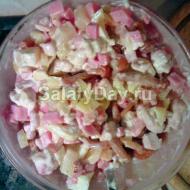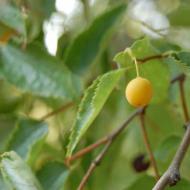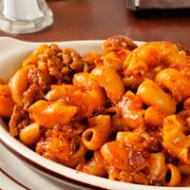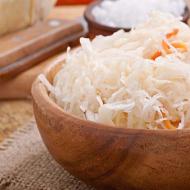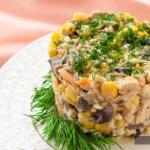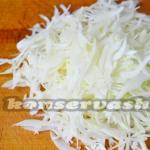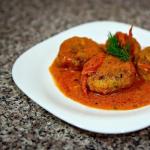
How to make soda at home. How to cook delicious carbonated lemonade
As you know, people began to carbonate water for a long time. Now it is customary to do it on a production scale. But in order to try to process the water yourself, you need to carefully understand all the intricacies of the process.
Good reasons
Hippocrates wrote about the benefits of water with gases. He spoke of its positive and even therapeutic effects on the body. Then no one tried to carbonate the water. People enjoyed the gifts of nature. They collected life-giving moisture with bubbles in bottles and took it to places where there were no similar sources. Everything would be fine, but on the way, over time, the water was exhaled, and it was extremely unpleasant to use it in this form. Since then, many have begun to wonder how water can be re-carbonated so that natural processes do not affect this factor. Scientists have found that there are two different ways to aerate a liquid: mechanical and chemical. The first is the direct saturation of the liquid fraction (ordinary fruit, mineral water or wine) with carbon dioxide. And the second one provides for the appearance of the same bubbles as a result of chemical reactions: fermentation (beer, kvass, cider and champagne) or neutralization (soda water). Each of them is interesting and has found its place in the life of a person.
Expendable bubbles
The first to learn to carbonate water was the English chemist Joseph Priestley. In 1767, he observed this phenomenon during beer fermentation in vats. A little later, the Swede Bergman invented his "saturator", which with a pump filled the water with carbon dioxide. But the idea of industrial production of “boiling water” did not give peace to mankind. Using previous experience, in 1783, Jacob Schwepp constructed a special installation and was the first to install a new production on industrial rails. A little later, he began to use baking soda as a source component and became the progenitor of the future popular drink. Over time, he created a whole company and registered the trademark Schweppes. Often people ask the question: "Why do we even need to process water like that?" There are several reasons:
1) Carbonation neutralizes unpleasant odors and improves the taste of ordinary water. It is known that, for example, mineral water smells badly if you drink it warm and without bubbles.
2) In the warm season, the water thus treated quenches thirst better.
3) Carbon dioxide, which saturate the liquid, is an excellent preservative and allows you to keep any drink for a long time.
All this leads to the problem of even greater interest from not only ordinary people, but also the owners of large enterprises.
Option for beginners

Sometimes you feel like drinking, and there is no desire to go to the store. The question arises how to be in this case. How to make sparkling water without leaving home? The easiest way is suitable even for a child. It will take very little:
- free container (empty bottle or simple glass),
- baking soda,
- sugar,
- lemon acid,
- plain water
In order to make a drink, you must:
- Take a little soda, pour lemon on it (or squeeze a few drops from a slice of lemon) and wait a bit. As a result, a quenching process will occur.
- Now you need to mix all the ingredients. To do this, pour water into a glass, add a spoonful of sugar and stir it quickly. Then add ½ teaspoon of lemon and cooked before this slaked soda. It remains only to mix everything well.
This is the easiest option, remembering that, each person will be able to understand how to make sparkling water. In Soviet times, this method was often resorted to.
Precautionary measures

People are always interested in the details. But before you figure out how to carbonate water, you need to decide for yourself whether to drink such drinks at all. After all, this kind of liquid is not useful to everyone. There are categories of people for whom they are contraindicated. It:
1) Small children under three years old, whose digestive system is not yet used to such effects.
2) People suffering from various disorders in the gastrointestinal tract. This includes those whose doctors have discovered an ulcer, gastritis, hepatitis, pancreatitis, and other diseases. In them, carbon dioxide, getting inside, causes a sharp irritation of the mucous membrane and aggravates these already existing inflammatory processes.
3) A person who is prone to allergies or is overweight. This category of people should also refrain from consuming “dangerous” fluids.
Everyone else should think carefully before casting their eyes on bright labels in retail outlets or to understand the technological processes.
Familiar devices
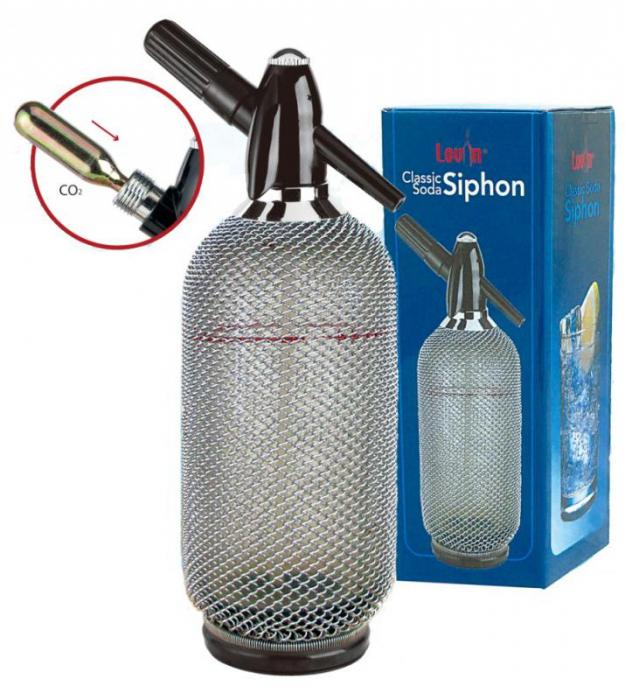
In order to get a pleasant soft drink, it is not necessary to go to the store and stand in a queue. For this purpose, a special apparatus has long been invented. This is a water siphon. It is small, used at home, and large, which is often used in bars and cafes. In the Soviet Union, on the streets everywhere you could find automatic machines, which, after pressing a button, filled faceted glasses with a stream of life-giving moisture. Now such devices have gone into oblivion. There are only models designed for home use. They are arranged very simply. The siphon consists of a tank with a lever and a cylinder with carbon dioxide. The device is based on the laws of physics and chemistry. The three-fourths main vessel is filled with water. A cylinder is attached to it, which through the inlet valve fills the remaining space with carbon dioxide. And after pressing the lever, the liquid under pressure comes out. As a result, ordinary sparkling water appears in the glass. With the help of special syrups and flavors, you can give it the desired taste or make your favorite cocktail.
For every taste
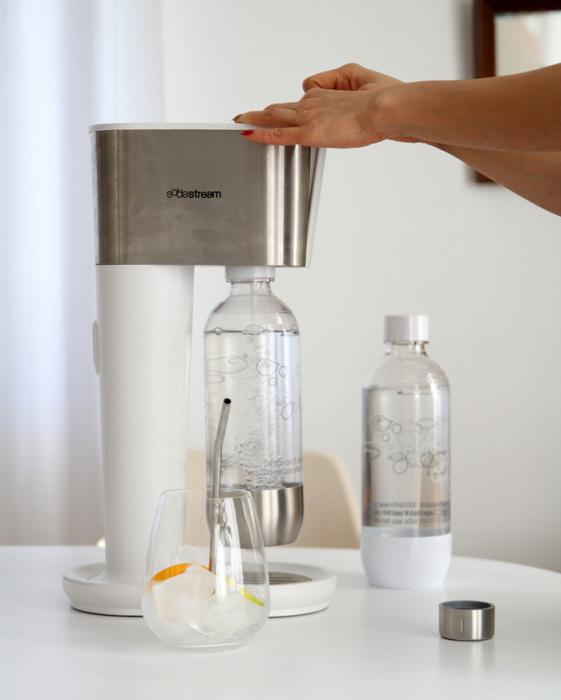
Everyone can choose for himself the siphon for water, which he likes more. Many years have passed since the creation of the first apparatuses. During this time, experts have developed devices of various modifications. The most famous of them are:
1) Siphons of the Austrian company Isi and the Italian firm Paderno. They are similar to those that were produced 40-50 years ago. The only difference is that the case is made of stainless steel instead of ordinary glass. They keep the water temperature for a long time and are quite inexpensive. But in these siphons there is a major drawback - the danger. The gas cartridge is inserted manually, which, if misused, can result in serious injury.
2) Device type "SodaTronic". There is no water in it. This machine is designed to carbonate ready-made drinks. Inside the design contains a removable container with gas, which allows you to adjust the degree of saturation of the product with carbon dioxide.
3) SodaStream devices. In them, the water is poured into a special bottle, which is already included in the kit.
The choice of device in any case always depends on the desire of the buyer.
How to make soda water from ordinary
There are several completely uncomplicated ways. So, to make a drink you need to take mineral water and mix it with soda and citric acid.
Would need:
- teaspoon of soda;
- a piece of lemon, so that 2 teaspoons of lemon juice come out, or simple citric acid - half a spoon;
- pour soda into a glass and extinguish it with lemon juice;
- those who love flavoring or simply want to sweeten soda can add cane or simple sugar. If you add caramelized sugar, you get a taste of cola. And if you pour in a little topping - it will come out no worse than any other sweet water from the store. If you put a lemon slice directly into the liquid, you get lemonade.
At home it is also easy to make soda in other ways.
Method number 1
This recipe is well suited for making large portions of soda water.
At first we mix everything for powder:
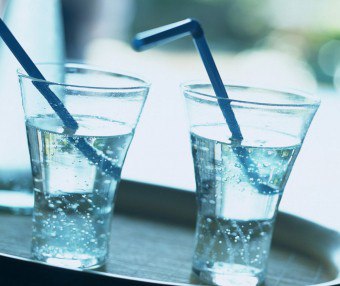
- baking soda - three incomplete teaspoons are enough;
- five teaspoons of powdered sugar, perhaps a little more or a little less, depending on your taste preferences;
- citric acid - 6 spoons (tea);
- all ingredients except powdered sugar are poured into a container, mixed and pounded. The mixture should be ground to near powder;
- we add icing sugar;
- mix the whole mixture again.
After the mixture is ready, pour it into the liquid.
Not less interesting taste of the drink prepared in house conditions, it will turn out if to fill in powder mix with juice or juice. Everyone probably remembers a huge amount of sweet soda in the store - now you have a great opportunity to cook something like this and in sufficient litra most yourself!
Method number 2
This method is for those who want to learn how to make a liter of soda water, adding vinegar to the composition.
You will need:
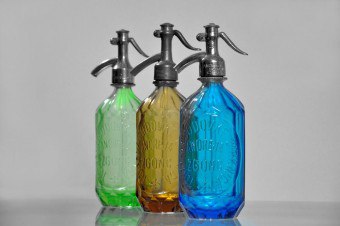
- 2 bottles, which can be closed with caps and connected with tubes;
- table vinegar - 100 ml;
- liter of ordinary water (it is possible and more, but then increase the remaining proportions);
- two small spoons of soda
When all the ingredients are prepared, pour liquid into the 1st container and lower the tube into it. Tightly close the lid. In the second bottle fall asleep soda and vinegar. Seal as the first bottle.
The tube for the transition of carbon dioxide set at the top. 5-7 minutes shake the liquid in the bottles.
Thus, carbon dioxide is released at home and saturates the liquid, making it carbonated. After preparation, it is desirable to cool the drink. Remember that the best such drink quenches thirst, if you drink cold.
Method number 3
An interesting way to make a carbonated drink at home will be the method using the already prepared carbon dioxide.
For this you will need:
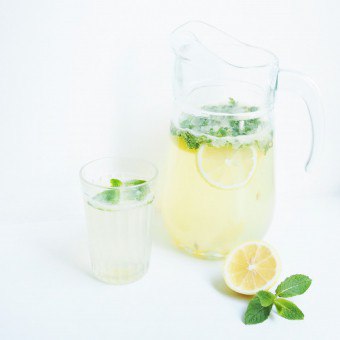
- prepared carbon dioxide;
- mineral water;
- siphon.
- the siphon tank is filled with a liquid (preferably cooled - for effective carbonation) and tightly closed;
- carbon dioxide cylinder is connected to the charge;
- unscrew the valve. When all carbon dioxide has already fallen into the siphon, unscrew the cylinder and close;
- soda is ready!
Method number 4
At home, you can also make a carbonated drink by fermentation.
To do this, do the following:
- Prepare;
- about 4 liters of chilled and a glass of warm water;
- half a cup of sugar;
- tablespoon of yeast. In the same case, if there is no bread yeast at hand, you can use the beer, but with a lower dosage - at the tip of a teaspoon;
- to taste you can pour a teaspoon of natural flavor.
It can be a concentrated liquid: juice, lemonade, etc., or herbs: tarragon or mint.
![]()
- Add yeast and dissolve in warm water. To dissolve completely, leave them to infuse for 5-10 minutes;
- In a container, mix the already dissolved yeast with sugar and flavor. Gradually pour in cold liquid and stir until sugar and other ingredients dissolve;
- The resulting drink is bottled and close them;
- Keep in a dark place for 5 days. At this time, the liquid wanders, so the lid should be periodically unscrewed and re-tightened;
- After 5 days, move the bottles to the fridge;
- Ready to eat!
For those who want to experiment and get the store taste of the drink, we recommend adding lemonade, uzvar, juice, or any kind of juice. You can achieve the effect and flavors.
However, not everyone can drink carbonated liquid. Therefore, it is rational to learn how to make non-carbonated water from carbonated?
There are 2 main ways to get non-carbonated water:
- shake and leave open in a warm place;
- to pass a stream of oxygen (pure nitrogen) through a liquid — this “blows out” carbonic acid.
To make both manipulations is absolutely not difficult. Carbonated water is natural and artificial. Let us say at once that naturally saturated, a very rare phenomenon.
But we all know how tasty! So try the above methods and choose your favorite!
(Visited 256 times, 2 visits today)
Soda is a great helper in the household, she has a great experience and a lot of useful qualities. She cleans surfaces, works as a baking powder, and she is also very useful in gargling, she brushes her teeth, she goes like the main ingredient in soda, she treats heartburn, smears mosquito bites with her solution. It is difficult to find such a substance, which is used so actively by man. Perhaps that is why we will learn in childhood how to make soda in a variety of different versions.
Soda for treatment
A solution of soda treat sore throat and cough. The recipes are different, so we give both. Remember how to make soda solution for rinsing is not difficult. For 1 cup of warm water you need to take 1 teaspoon (without the top!) Of soda, stir. Then you can start rinsing. If salt is added to the solution at the tip of a knife, 2-3 drops of iodine, then we get a solution for rinsing sick teeth. The solution pulls up suppurations, inflammations, reduces pain. A solution of soda helps with thrush. In this case, the solution is prepared more saturated: a cup of water with a teaspoon of soda and top. You need to stir for 2-3 minutes to dissolve all the powder.
Soda water, a drink from childhood
In the 70-80s there was not such a variety of soda in stores as it is now. And then almost in every house there was a siphon with which they prepared soda. And they also made soda water, which was popularly called “pop”. By the way, for children it was the first serious lesson in chemistry, very clear, and even with a tasty result. First, 2-3 teaspoons of sugar should be dissolved in a glass of water. Then pour half a teaspoon of citric acid there. And now the most spectacular moment of cooking! In the glass should be poured ¼ of a teaspoon of soda. There will be a very violent reaction, so it is better to take a bigger container for cooking. You can drink immediately. This recipe tells how to make soda water. But you can still make a soda pop based on juice, compote, water with syrup, jam, etc.
Tell me please!!! How to make sparkling water at home and without a siphon.
- dissolve citric acid in water ...
- carbonated water for domestic conditions
Gaziro L9; bath water L9; It is made on the basis of pure drinking water, saturated with carbon dioxide, it has a peculiar pleasant taste, refreshing properties and so-called sparkling (intense and prolonged evolution of gas bubbles). There are slightly, medium, and highly carbonated water.
Over the centuries, people quenched their thirst with juices, compote, water mixed with syrup. Also, quite a long time ago people discovered the healing properties of mineral water (naturally carbonated), the waters of healing mineral springs have been used since time immemorial. And at one point, these two drinks decided to mix. English chemist Joseph Priestley invented sparkling water in 1767. After experimenting with the gas released during fermentation in the vats of the brewery, he designed a device that allows using a pump to saturate water with "carbonated" bubbles and called it a saturator, from lat. saturo “saturate”. Industrial production began in 1783 by Jacob Schwepp (from which the trademark Schweppes originated).
Carbon dioxide is quite well dissolved in water, as well as other gases entering into chemical interaction with it (hydrogen sulfide, sulfur dioxide, ammonia, etc.). Other gases are less soluble in water. Sparkling water quenches thirst better and causes pleasant sensations in the mouth due to the mechanical action of bubbles, and also has a preservative property, increasing the shelf life of beverages. Carbon dioxide is used as a preservative and is indicated on the package under the code E290. The gas is produced in two ways: mechanical and natural.
Mechanically introducing and saturating liquids with carbon dioxide: fruit and mineral water, carbonated or effervescent, wines and water. At the same time, drinks are carbonated in special devices of saturators, acratophores or metal tanks under pressure, pre-cooling and removing air from the liquid. Usually, beverages are saturated to 5-10 g / l. The carbonation of water with carbon dioxide does not disinfect.
Chemically, the drink is carbonated with carbon dioxide during fermentation: beer, bottled and acretophoric champagne, sparkling wines, cider, bread kvass, or in the interaction of acid and baking soda: seltzer water.Overuse of sweet soda can increase the likelihood of obesity or diabetes.
_______________________________-
and for the manufacture of gas. water at home, before selling thermoses in cylinders, but now they are little used, because soda is available - and on the shelves of her very much.
About soda first learned in the second half of the 19th century. She came to taste very much and since that time has not left the shops. In the last century, sparkling water was called soda and purchased in vending machines. Today it is easy to buy it in any store. But not everyone knows that making soda at home is also not difficult. Cooking will take a few minutes, and as a result you can get more than one liter of thirst quenching drink.
How to make sparkling water from ordinary?
To do this, there are several absolutely not complicated ways. So, to make a drink you need to take mineral water and mix it with soda and citric acid.
Would need:
- teaspoon of soda;
- a piece of lemon, so that 2 teaspoons of lemon juice come out, or simple citric acid - half a spoon;
- pour soda into a glass and extinguish it with lemon juice;
- those who love flavoring or simply want to sweeten soda can add cane or simple sugar. If you add caramelized sugar, you get a taste of cola. And if you pour in a little topping - it will come out no worse than any other sweet water from the store. If you put a lemon slice directly into the liquid, you get lemonade.
At home it is also easy to make soda in other ways.
Method number 1
This recipe is well suited for making large portions of soda water.
At first we mix everything for powder:
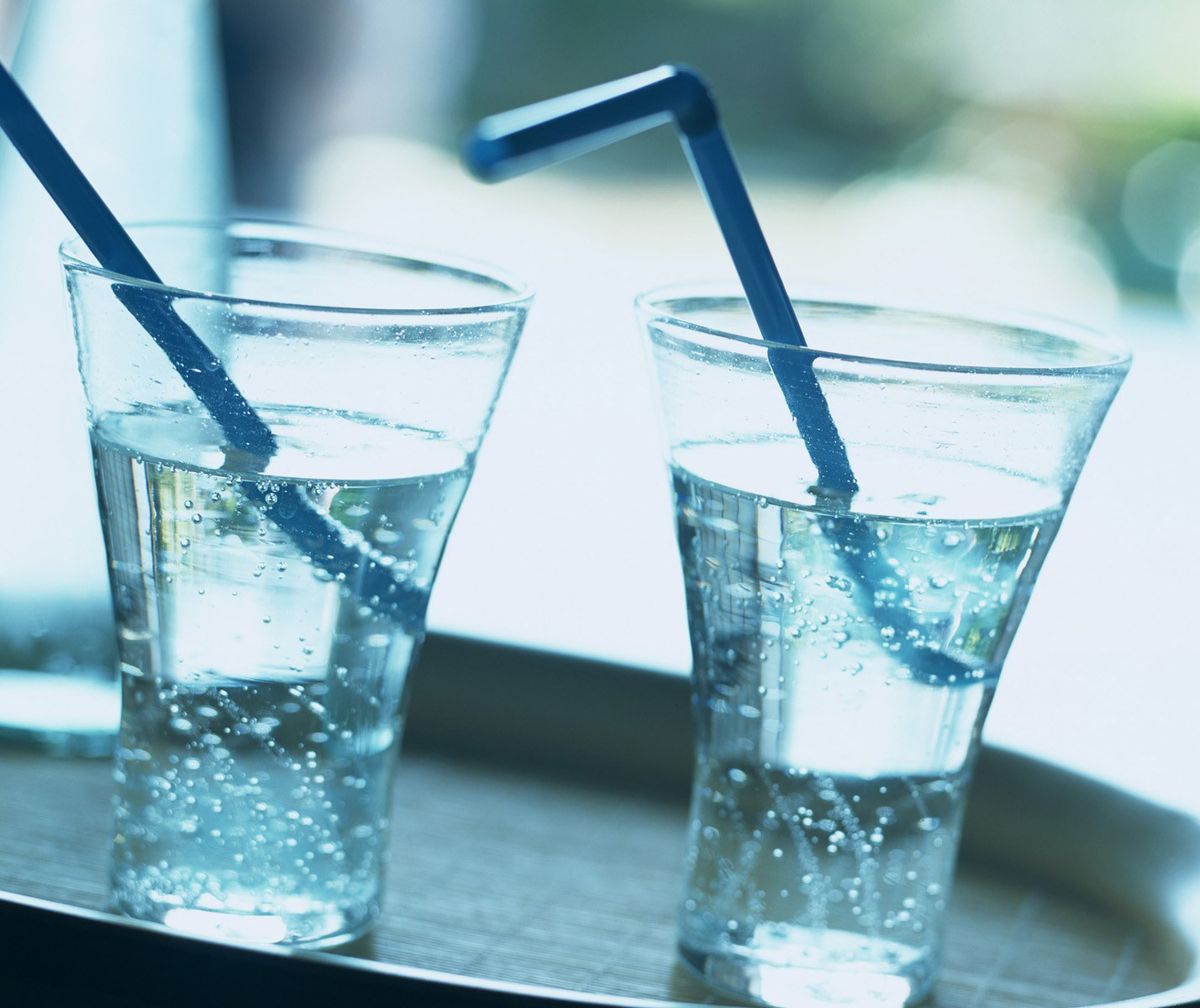
- baking soda - three incomplete teaspoons are enough;
- five teaspoons of powdered sugar, perhaps a little more or a little less, depending on your taste preferences;
- citric acid - 6 spoons (tea);
- all ingredients except powdered sugar are poured into a container, mixed and pounded. The mixture should be ground to near powder;
- we add icing sugar;
- mix the whole mixture again.
After the mixture is ready, pour it into the liquid.
Not less interesting taste of the drink prepared in house conditions, it will turn out if to fill in powder mix with juice or juice. Everyone probably remembers a huge amount of sweet soda in the store - now you have a great opportunity to cook something like this and in sufficient litra most yourself!
Method number 2
This method is for those who want to learn how to make a liter of soda water, adding vinegar to the composition.
You will need:

- 2 bottles, which can be closed with caps and connected with tubes;
- table vinegar - 100 ml;
- liter of ordinary water (it is possible and more, but then increase the remaining proportions);
- two small spoons of soda
When all the ingredients are prepared, pour liquid into the 1st container and lower the tube into it. Tightly close the lid. In the second bottle fall asleep soda and vinegar. Seal as the first bottle.
The tube for the transition of carbon dioxide set at the top. 5-7 minutes shake the liquid in the bottles.
Thus, carbon dioxide is released at home and saturates the liquid, making it carbonated. After preparation, it is desirable to cool the drink. Remember that the best such drink quenches thirst, if you drink cold.
Method number 3
An interesting way to make a carbonated drink at home will be the method using the already prepared carbon dioxide.
For this you will need:
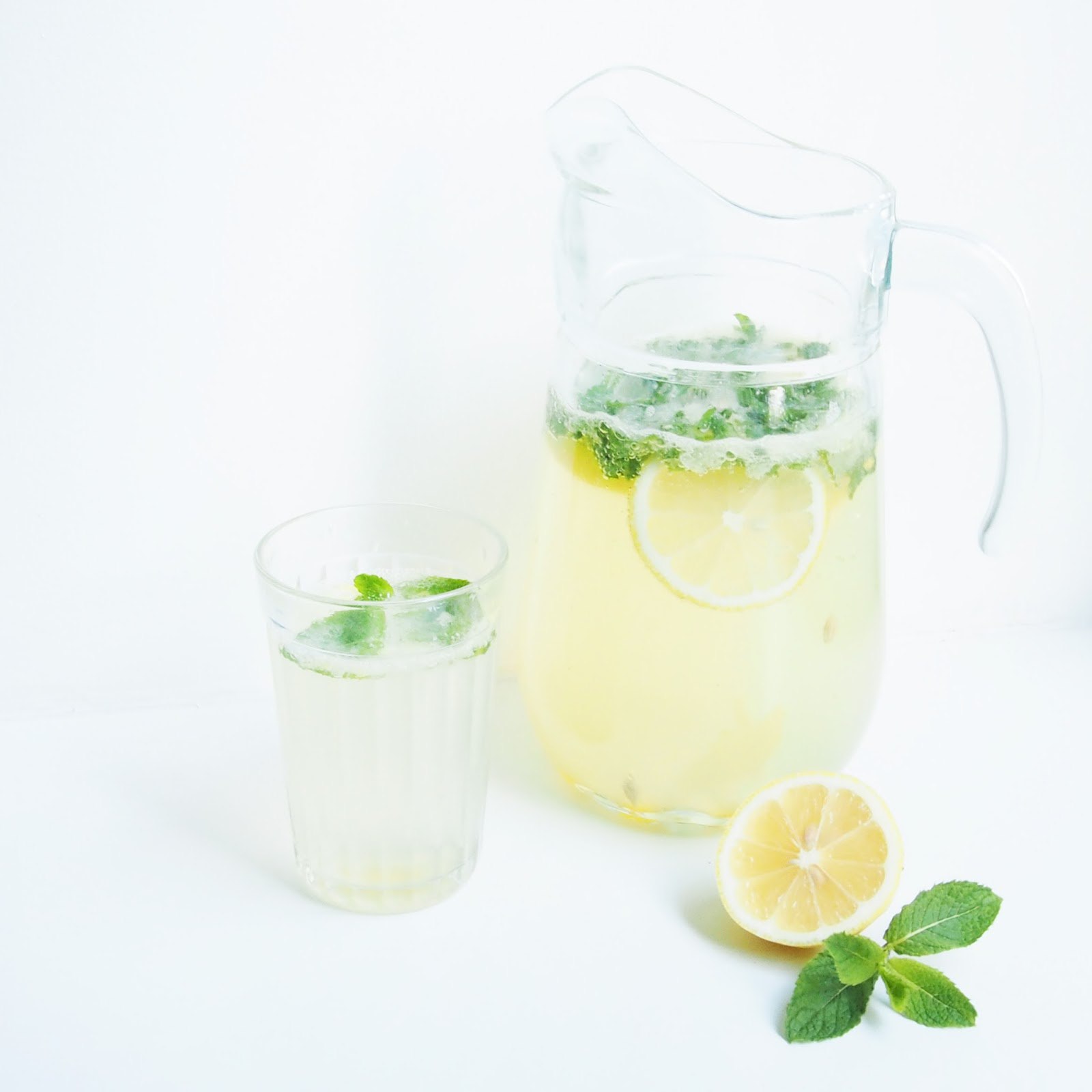
- prepared carbon dioxide;
- mineral water;
- siphon.
- the siphon tank is filled with a liquid (preferably cooled - for effective carbonation) and tightly closed;
- carbon dioxide cylinder is connected to the charge;
- unscrew the valve. When all carbon dioxide has already fallen into the siphon, unscrew the cylinder and close;
- soda is ready!
Method number 4
At home, you can also make a carbonated drink by fermentation.
To do this, do the following:
- Prepare;
- about 4 liters of chilled and a glass of warm water;
- half a cup of sugar;
- tablespoon of yeast. In the same case, if there is no bread yeast at hand, you can use the beer, but with a lower dosage - at the tip of a teaspoon;
- to taste you can pour a teaspoon of natural flavor.
It can be a concentrated liquid: juice, lemonade, etc., or herbs: tarragon or mint.
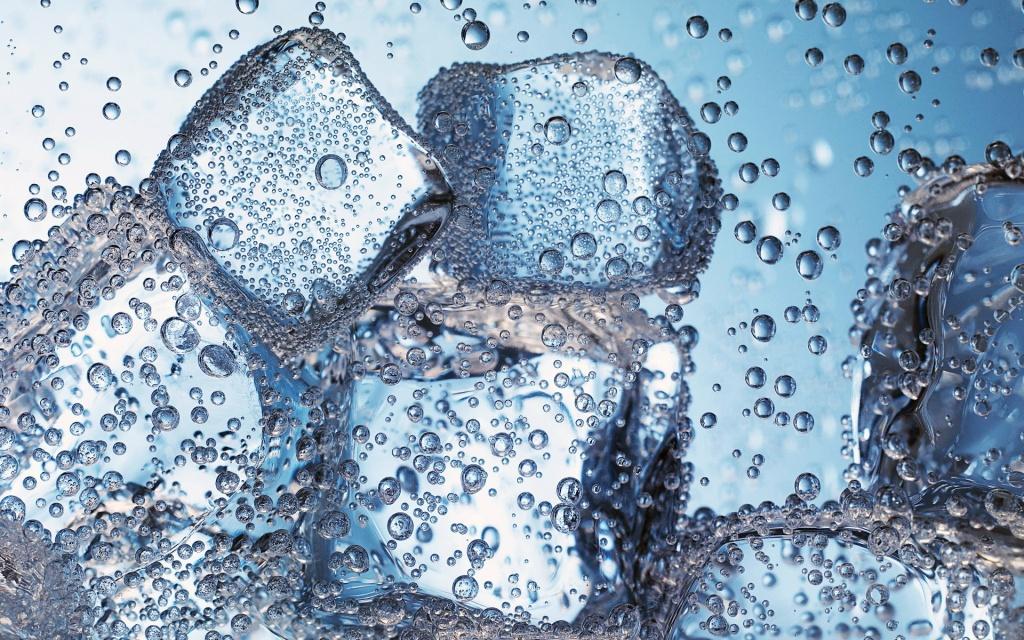
- Add yeast and dissolve in warm water. To dissolve completely, leave them to infuse for 5-10 minutes;
- In a container, mix the already dissolved yeast with sugar and flavor. Gradually pour in cold liquid and stir until sugar and other ingredients dissolve;
- The resulting drink is bottled and close them;
- Keep in a dark place for 5 days. At this time, the liquid wanders, so the lid should be periodically unscrewed and re-tightened;
- After 5 days, move the bottles to the fridge;
- Ready to eat!
For those who want to experiment and get the store taste of the drink, we recommend adding lemonade, uzvar, juice, or any kind of juice. You can achieve the effect and flavors.
However, not everyone can drink carbonated liquid. Therefore, it is rational to learn how to make non-carbonated water from carbonated?
There are 2 main ways to get non-carbonated water:
- shake and leave open in a warm place;
- to pass a stream of oxygen (pure nitrogen) through a liquid — this “blows out” carbonic acid.
To make both manipulations is absolutely not difficult. Carbonated water is natural and artificial. Let us say at once that naturally saturated, a very rare phenomenon.
But we all know how tasty! So try the above methods and choose your favorite!

